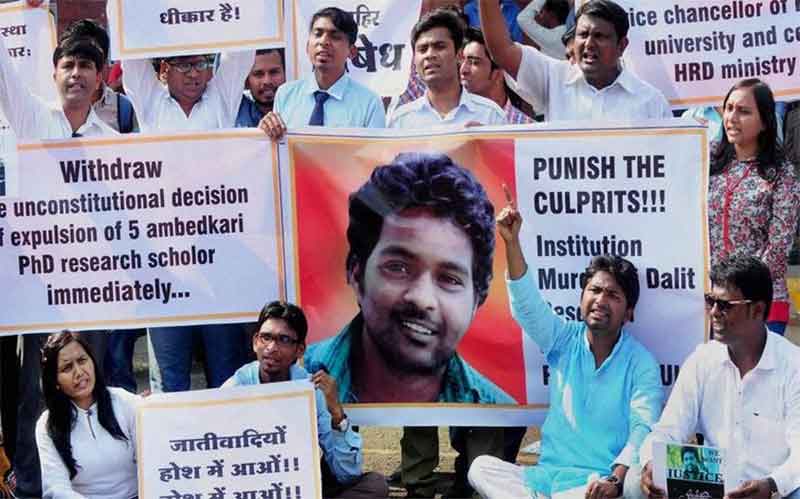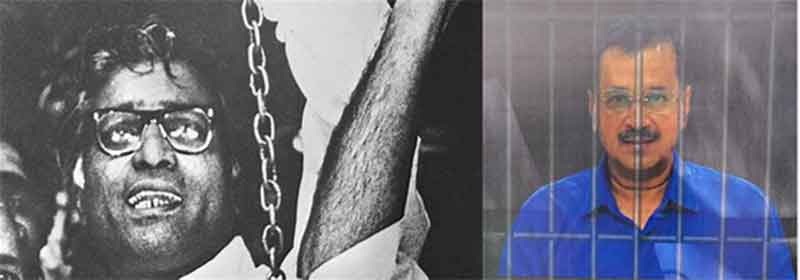“Aemilia Lanyer As Shakespeare’s Co-Author” by Mark Bradbeer presents a detailed case that a woman of colour and feminist poet, Aemilia Lanyer, was an important co-author of William Shakespeare, and hence made a big contribution to a body of works that are foundational to English literature and the English language that is spoken by over 1 billion people in India, South Asia, the former British Empire and the European Anglosphere. This book affirms Aemilia Lanyer as a feminist icon.
Mark Bradbeer’s “Aemilia Lanyer As Shakespeare’s Co-Author” [1] is an exhaustively documented case for recognizing the hitherto hidden contribution by courageous female writer Aemilia Lanyer to English literature and the English language as a co-author of Shakespeare. According to the Poetry Foundation: “Aemilia Lanyer was the first woman writing in English to produce a substantial volume of poetry designed to be printed and to attract patronage. The volume comprises a series of poems to individual patrons, two short prose dedications, the title poem on Christ’s Passion (viewed entirely from a female perspective), and the first country-house poem printed in English, “The Description of Cooke-ham,” which precedes the publication of Ben Johnson’s “To Penshurst” by five years. Lanyer’s poetry shows evidence of a practiced skill. The volume is also arguably the first genuinely feminist publication in England: all of its dedicatees are women, the poem on the Passion specifically argues the virtues of women as opposed to the vices of men, and Lanyer’s own authorial voice is assured and unapologetic” [2].
Aemilia’s feminist stance in a violently patriarchal world is exampled by the following poems:
“Then let us have our liberty again,
And challenge to yourselves no sovereignty;
You came not in the world without our pain,
Make that a bar against your cruelty;
Your fault being greater, why should you disdain
Our being your equals, free from tyranny?
If one weak woman simply did offend,
This sin of yours has no excuse nor end”;
and, also in relation to Eve and “original sin”:
“But surely Adam cannot be excused,
Her fault though great, yet he was most to blame;
What Weakness offered, Strength might have refused” [3].
That achievement alone as a first pro-feminist poet in in a violently patriarchal English society makes Aemilia Lanyer a feminist icon, but Mark Bradbeer’s book through careful and fascinating analysis extends her position to that of a powerful feminist writer who through her Shakespearian contribution was also foundational to the modern English language.
 There has been considerable speculation that Aemilia Lanyer was connected to Shakespeare and may have been the “dark lady” of Shakespeare’s Sonnets (in keeping with her Italian origin and appearance [3]), but it appears that this hypothesis is largely rejected by the “received wisdom” of Shakespeare scholars [4-6]. However Mark Bradbeer’s careful historical and literary analysis makes a convincing case that Aemilia Lanyer was familiar with Shakespeare’s “crowd”, inspired the naming of many characters in his plays, and indeed was a co-author of several of Shakespeare’s works. Mark Bradbeer’s book thus represents an important addition to a growing literature that finally gives recognition to high achieving women and “women behind the men” (e.g. see [7]).
There has been considerable speculation that Aemilia Lanyer was connected to Shakespeare and may have been the “dark lady” of Shakespeare’s Sonnets (in keeping with her Italian origin and appearance [3]), but it appears that this hypothesis is largely rejected by the “received wisdom” of Shakespeare scholars [4-6]. However Mark Bradbeer’s careful historical and literary analysis makes a convincing case that Aemilia Lanyer was familiar with Shakespeare’s “crowd”, inspired the naming of many characters in his plays, and indeed was a co-author of several of Shakespeare’s works. Mark Bradbeer’s book thus represents an important addition to a growing literature that finally gives recognition to high achieving women and “women behind the men” (e.g. see [7]).
A famous example is that of Marie Curie. In 1903 the Nobel Prize committee initially intended to award the prize to Pierre Curie and Henri Becquerel, but after Pierre Curie was advised of this by a pro-woman committee member and complained, Marie Curie was added. Marie Curie was the first woman to be awarded the Nobel Prize (for Physics in 1903, for studies on radiation from radioactive materials ). Marie Curie was awarded a second Nobel Prize (for Chemistry in 2011, for the discovery of radium and polonium) but Svante Arrhenius (chair of the committee) tried to prevent her attendance for the award because of her affair with fellow physicist Paul Langevin. Marie Curie attended after stating that there was no relation between her science and her private life. She was the first person to win 2 Nobel Prizes, the only other dual awardee being Linus Pauling (for Chemistry in 1954 for his work on chemical bonds and the structure of proteins, and for Peace in 1962) [8].
A more recent example of patriarchal suppression is X-ray crystallographer Dr Rosalind Franklin of King’s College, London, who is now recognized as a key player in the determination of the double helix structure of DNA that resulted in the 1962 award of the Nobel Prize for Physiology or Medicine to Maurice Wilkins, Francis Crick and James Watson, and revolutionized biochemistry, genetics and molecular biology [9-11].
Mark Bradbeer’s very detailed and exhaustively documented book provides a very useful prefatory summary: “This book presents original material which indicates that Aemilia Lanyer – female writer, feminist, and Shakespeare contemporary – is Shakespeare’s hidden and arguably most significant co-author. Once dismissed as the mere paramour of Shakespeare’s patron, Lord Hunsdon, she is demonstrated to be a most articulate forerunner of #MeToo fury. Building on previous research into the authorship of Shakespeare’s works, Bradbeer offers evidence in the form of three case studies which signal Aemilia’s collaboration with Shakespeare. The first case study matches the works of “George Wilkins” – who is currently credited as the co-author of the feminist Shakespeare play Pericles (1608) – with Aemilia Lanyer’s writing style, education, feminism and knowledge of Lord Hunsdon’s secret sexual life. The second case study recognizes Titus Andronicus (1594), a play containing the characters Aemilius and Bassianus, to be a revision of the suppressed play Titus and Vespasian (1592), as authored by the unmarried pregnant Aemilia Bassano, as she then was. Lastly, it is argued that Shakespeare’s clowns, Bottom, Launce, Malvolio, Dromio, Dogberry, Jaques, and Moth, arise in her deeply personal war with the misogynist Thomas Nashe. Each case study reveals new aspects of Lanyer’s feminist activism and involvement in Shakespeare’s work, and allows for a deeper analysis and appreciation of the plays. This research will prove provocative to students and scholars of Shakespeare studies, English literature, literary history, and gender studies” [1].
One usefully notes here that Lord Hunsdon (Henry Carey, 1526-1596, Lord Chamberlain to Queen Elizabeth I) in 1594 “became a patron of The Chamberlain’s Men, the theatre company to which Shakespeare became associated” (page 104[1]), and he started controlling sexual intimacy with Aemilia when she was 18 and he was 61. Further, George Wilkins, currently credited as a co-author of the feminist Shakespeare play Pericles (1608), was a violent criminal, misogynist and brothel owner.
With this background we can delve further into this fascinating book, and summarize the evidence for Aemilia’s association with William Shakespeare.
Chapter 1, Shakespeare’s Patron and Female Friend, sets out details of some of the key players and some of the evidence for Aemilia’s co-authorship with Shakespeare.
William Shakespeare (1564-1616) had an important patron in Henry Wriothesley (1573-1624), Earl of Southampton (conveniently referred to as the name as pronounced, Wroseley, throughout the book). Wroseley became the 3rd Earl at the age of 7, and his guardian was the powerful William Cecil (Lord Burghley; the chief adviser of Queen Elizabeth I for most of her reign, twice Secretary of State and Lord High Treasurer from 1572). However Wroseley by secretly marrying without Royal Assent Elizabeth Vernon (the cousin of Robert Devereux, the powerful 2nd Earl of Essex), dangerously angered Queen Elizabeth (1558-1603) against both Wrosely and Essex (she later was to have Essex executed for his abortive 1601 rebellion). Wrosely was evidently bisexual and the patron of both the misogynist and Establishment writer Thomas Nashe and of a carefully navigating William Shakespeare.
Aemilia Lanyer (1569-1645) was the Italian-complexioned (dark) daughter of Baptiste Bassano, a Venetian-born musician at the court of Elizabeth I. Her father died in 1576 leaving her a dowry. Aemilia went to live with Susan Bertie, Countess of Kent, who had progressive views about women. In Bertie’s house Aemilia was given a humanist education and learnt Latin (it is likely that she also spoke Italian and French). Aemilia thence went to live with Margaret Clifford, Countess of Cumberland and Margaret’s daughter, Lady Anne Clifford. Aemilia’s mother Margaret died in 1587, and Aemilia (18 years old) became the mistress of Henry, Lord Hunsden who was decades older (61). When Aemilia became pregnant she was married off to Alphonse Lanyer and given a financial settlement by Hunsdon. The diary of the astrologer Forman indicates that Aemilia was unhappy in this marriage: “A nobleman that is ded hath Loved her well & kept her and did maintain her longe but her husband hath delte hardly with her and spent and consumed her goods and she is nowe… in debt”. She had 2 children and another of Forman’s entries states that Aemilia Lanyer told him about having several miscarriages. Aemilia Lanyer gave birth to a son, Henry, in 1593 and a daughter, Odillya, in 1598 (who died at ten months). Aemilia Lanyer published her volume of poetry, Salve Deus Rex Judaeorum (Hail, King of the Jews) in 1611, a deeply Christian work that had a bold feminist thrust. Aemilia was the first woman in England to declare herself a poet. After Alfonso Lanyer died in 1613, Aemilia supported herself by running a school, but disputes over rent ended this enterprise. She died in 1645 at the remarkable age of 76 [1-6].
Bradbeer makes the following connection of Aemilia with William Shakespeare (W.S.) and Henry Wroseley (H.W.): “In the same year that Shakespeare’s Rape of Lucrece (1594) and associated dedication to Wriothesley was published, the poem Willobie His Avisa was also published. Indeed, this work refers to Shakespeare and his Rape of Lucrece directly in the introductory poem” (page 8 [1]). Avisa is most likely Susan Bertie, the sister of Peregrine Bertie, Lord Willoughby, and the constant wife of John Wingfield whom she accompanied during war in the Netherlands. Bradbeer: “The long poem, Willobie His Avisa, is about how Avisa resisted a succession of men who try to challenge her chastity, aggressively or otherwise. While Avisa, the idealized maid and wife, appears to be modelled on the virtuous Susan Wingfield, it is proposed that the numerous trials presented in the seventy-two cantoes of Willoughby His Avisa are based on Susan’s pupil, that is, the above-mentioned Aemilia Bassano Lanyer, trials she probably failed. The last two suitors of the married Avisa are young, unmarried H.W. and his older married friend and mentor W.S.” (page 10 [1]). Bradbeer quotes Shakespeare’s Sonnet 144 (1609) in which he refers to his 2 intimates: “ Two loves , I have, of comfort and despair,/ Which like two spirits do suggest me still,/ The better angel is a man right fair,/ The worser spirit a woman colour’d ill”. Bradbeer concludes “The poet Aemilia Lanyer, it is proposed, was more than a major inspiration for a number of Shakespeare’s female characters; she was his hidden female co-author. Indeed, evidence will be presented for her being responsible for a significant part of the theme and plot of some plays” (page 10 [1]). ,
Chapters 2-7, Part I , Collaboration Case Study #1, A Late Romance expands on Chapter 1, and set out details of further evidence for the Shakespeare-Aemilia connection, as summarized by the titles (space does not permit detailing the historical and textual comparison arguments – for all of this fascinating and detailed detective work you will have to read the book). Case Study #1 study matches the works of “George Wilkins” – who is currently credited as the co-author of the feminist Shakespeare play Pericles (1608) despite his being a violent criminal, misogynist and brothel keeper – with Aemilia Lanyer’s writing style, education, pro-feminism and intimate knowledge of Lord Hunsdon’s secret sexual life. The dangers of being a writer: “In 1579, the lawyer, John Stubbes (c1544-1590) offended the Queen by publishing a Non-Conformist pamphlet arguing against her proposed marriage to the Duke of Anjou. His right hand was cleaved off on a scaffold and he was imprisoned… He was a walking warning against publishing controversial work under one’s own name” (page 40 [1]).
Chapter 2, Shakespeare’s friends and The Go-Between, Humphrey Fludd
Chapter 3, The Early Feminist Poet, Aemilia Lanyer
Chapter 4, Miseries of Marriage
Chapter 5, Conceiving Lanyer as Shakespeare’s Collaborator
Chapter 6, Conceiving Lanyer as Shakespeare’s Dark Lady
Chapter 7, Glimpses of Shakespeare’s Love Triangle
Chapters 8-11, Part II, Collaboration Case Study #2: Rewriting Rape details the anger of Aemilia over the maltreatment of women, including herself, and the overflow into some of Shakespeare’s plays. Case-study #2 recognizes Titus Andronicus (1594), a play containing the characters Aemilius and Bassianus, to be a revision of the suppressed play Titus and Vespasian (1592), as authored by the then unmarried pregnant Aemilia Bassano.
Chapter 8, The Rape of Lucrece, and Willobie His Avisa
Chapter 9, Locrine and Edward III
Chapter 10, The Goth Queen Tamora /Attava
Chapter 11, Deconstructing Titus Andronicus
Chapter 12, Reconstructing Titus and Vaspasian
Chapters 13-17, Part III, Collaboration Case Study #3: Immortalizing An Ass, is a very funny and serious account of how in his comedies Shakespeare mocked dangerous, misogynist and Church Establishment writer Thomas Nashe (A Nashe, An Ass) who threatened Non-Conformist writers who, under the Elizabethan police state, could suffer severe penalties ranging from censorship, burning of books, and smashing of presses, to abusive imprisonment, torture, cutting off of hands, and death
Chapter 13, A Collaboration to Sanitize A Nashe
Chapter 14, Two Asses in The Comedy of Errors
Chapter 15, Two Asses in As You Like it
Chapter 16, The Rise of Mar-prelate
Chapter 17, The Reckoning for Mar-Prelate
Chapter 18 and 19, Part IV, A Woman’s Imagining, further deals in detail with “the woman’s touch” in Shakespeare’s plays and Sonnets.
Chapter 18, Venus and Adonis and Two Noble Kinsmen, concludes with a powerful argument in support of Aemilia Lanyer née Bassano’s co-authorship: “Giovanni Battista Giraldo (1504-1573), also known as Cinthia, whose untranslated Hecatommithi (1565), was a source for Shakespeare’s plays, Othello and Measure for Measure. In 1554 in Venice, he also published the untranslated Discorsi, or discourses on the composition of Romances, Comedies and Tragedies, which were indeed schoolmasterly guides to writing plays… From the earliest of Shakespeare’s plays, Titus and Andronicus, with its Aemilius and Bassianus, to the last, Two Noble Kinsmen, with Emilia and her schoolmaster Giraldo, Shakespeare had a secret co-author with access to sources not yet translated into English” (pages 191-192 [1]).
Chapter 19, “Manly Genius” is a final chapter in which Mark Bradbeer concludes this book by throwing a huge boulder into the literary and cultural pond: “The homosexuality of Henry Wroseley, Earl of Southampton, has been long recognized. Shakespeare’s bisexuality has only recently been generally acknowledged. It is therefore quite plausible for poet and patron to have had an affectionate relationship… It is unsurprising that there is little overt and conclusive evidence of a physical relationship. According to one contemporary definition – at a time of rapidly-changing gender definitions – Henry Wrosely might be called homoflexible, while Shakespeare might be called heteroflexible. They are now out of the closet. Just because it is difficult to envisage conditions for a close physical engagement between Shakespeare and Wrosely, it is no good reason to deny the plausibility. This love triangle which resonates throughout the Shakespeare Canon is more of a signature of Shakespeare’s work than any one of his six surviving signatures. Indeed, this was one of Shakespeare’s personal and political messages, even if it was discretely blurred for his contemporary society. Biographers are often accused of portraying “Shakespeare” in their own image. Previous generations of white middle-class heterosexuals like myself have been ham-strung from appreciating Shakespeare’s works without the prejudices of colour, race, class, sex, and gender. Hopefully, we may be allowed to see the fuller humanity in his/her works – as the offspring of a coloured woman and a bisexual man” (pages 199-200 [1]).
Final comments
Mark Bradbeer’s “Aemilia Lanyer As Shakespeare’s Co-Author” is an important book and should be in every school, university and national library. It is very readable, well-researched, and is also fun as a carefully-researched detective story. Mark Bradbeer’s book makes out a strong case for Aemilia Lanyer as a major feminist icon, and a friend, influencer and co-author of William Shakespeare who is foundational for English literature and the modern English language spoken by over 1 billion people. No doubt the book will stir great controversy among the Shakespeare experts. However it undoubtedly affirms Aemilia Lanyer as an early feminist icon that all women and men can admire and be inspired by.
The book makes clear how dangerous the times were for poets and writers in Queen Elizabeth’s police state. Not only were Catholics persecuted and Catholic priests hunted down and killed (e.g. see Evelyn Waugh’s “Edmund Campion” [12]), but Protestant Non-Conformists were horribly persecuted for their views, with the punishments ranging from book burning to execution. Mark Bradbeer gives the horrifying example of John Stubbes whose right hand was chopped off for publishing a Non-Conformist pamphlet displeasing to the Queen (page 40 [1]). Shakespeare’s friend and fellow writer, Christopher Marlowe, was attacked for his Non-Conformist writings by Thomas Nashe (A Nashe, An Ass), subsequently arrested in 1593, and shortly thereafter was mortally wounded in the eye in a pub (page 116 [1]. One can well understand the Elizabethan writers’ need for care and anonymity, and the elaborate allusions in Shakespeare’s writing that can sometimes be difficult to immediately understand as well as entertaining and powerful when grasped.
Of course persecution of writers and thinkers is a horrible accompaniment of “civilization” from Socrates forced to drink hemlock in 399 BC to present-day Australian and World hero and journalist Julian Assange imprisoned for a decade for revealing a huge mass of American secrets, and, in the absence of support from a succession of cowardly, unprincipled and US lackey Australian Governments, now facing life imprisonment and death in an American prison for the asserted crime of truth-telling [13]. Julian Assange is being cruelly punished primarily for the asserted “crime” of publishing a huge body of secret US documents (many of which reveal US war crimes). However, as gratifyingly pointed out by Julian Assanges’s father, John Shipton (who is loyally and desperately pleading for his son’s life), I (Gideon Polya) have been carefully estimating the millions of Muslim deaths in 21st century US wars [14-16]. However I remain unmolested because, despite publishing numerous books and hundreds of articles overseas about this carnage [17-22], I have merely been rendered “invisible” in my own country by Australian “gate-keepers” and by mendacious and cowardly Mainstream journalist, editor, politician, academic, and commentariat presstitutes.
Just as some of Shakespeare’s friends were persecuted and threatened for being the “wrong kind of Protestant”, so Baruch Spinoza (1632-1677), a Father of the Enlightenment, was excommunicated by the Dutch Jewish community for advocating reasoned argument rather than primitive Biblical literalism [23]. In the mid-20th century Dr Edith Bone (a cousin of my grandmother Livia Polya née Borbas) was the “wrong kind of Communist” and in 1949, while covering a Hungarian Communist conference in Budapest as a British journalist, was arrested and imprisoned in solitary confinement for 7 years. After her escape in the 1956 Hungarian Uprising she wrote a book “Seven Years Solitary”[24], that was to inspire a young Aung San Suu Kyi [25] who was later to experience decades of imprisonment. According to the International Federation of Journalists, 2,658 journalists were killed in the last 30 years [26]. In that period the average population of the World was 6,541.9 million, this indicating an average of 0.135 journalists killed annually per 10 million of population. In comparison, over 50 Palestinian journalists have been killed by Israelis in the last 2 decades [27], an average of over 2.19 journalists killed annually per 10 million of Subjects by Apartheid Israel, or 16.2 times more than for the World. In 2022 the latest killing was of important Palestinian journalist Shireen Abu Akleh of Al Jazeera, publicly murdered by an Israeli sniper [27].
In relation to the assertedly “wrong kind of human” (Aemilia, a woman) and the “wrong kind of Christian” (persecution of Catholics and Non-Conformists), only briefly alluded to in Mark Bradbeer’s book was the crushing and deadly dispossession of most of Catholic Gaelic Ireland under Elizabeth I in the period 1566-1603 [28]. This was followed by Cromwell’s devastation of Ireland (1649-1653) that caused 618,000 deaths from fighting and disease out of a total pre-war population of circa 1.5 million, or 41% of the population [29], and in the 19th century the 1845-1852, British-imposed Irish Famine in which 1 million starved to death, circa 1 million more died among the 2 million refugees who fled Ireland for North America, and the population was reduced by 25% [30]. The Golden Elizabethan Age of which Shakespeare was the literary star was concluding when Elizabeth I granted a charter to the East India Company in 1600, and the British Empire of slavery and genocide was commencing. In India alone in 1757- 1947 Britain stole $45 trillion and 1,800 million Indians died from imposed deprivation in a 2 century Indian Holocaust between the Great Bengal Famine (1769-1770; 10 million killed) and the “forgotten” 1942-1945 Bengali Holocaust (WW2 Indian Holocaust, WW2 Bengal Famine; 6-7 million Indians in Bengal, Bihar, Assam and Odisha were deliberately starved to death by the British with Australian complicity for strategic reasons. Australia was complicit by denying starving India food from its huge wartime grain stores. The atrocity was associated with massive civilian and military sexual abuse of starving women and girls on the same scale as the appalling Comfort Women abuses of the Japanese Imperial Army [17-21, 31-36]).
A fascinating aspect of Mark Bradbeer’s book involved detailed literary detective work, with key lines of evidence summarized in Tables 1.1 to 16.1. Thus, for example, Table 9.1 summarizes works concerning rape and associated with Shakespeare, and likely influenced by the articulate indignation of Aemilia (page 73 [1]). I relate enthusiastically to his literary scholarship because I have published 2 editions of a book entitled “Jane Austen and the Black Hole of British History. Colonial rapacity, holocaust denial and the crisis in biological sustainability” (an updated 2022 edition is being prepared for publication). In short, my book among many other “forgotten” things, reports how Jane Austen’s ”Sense and Sensibility” tells the secret story (with appropriate and clever disguising) of how her aunt Philadelphia Austen went out to India, married a surgeon, and was seduced by Warren Hastings (later the first governor -general of India), with the product of the union being Jane Austen’s cousin Eliza (a model for the more adventurous women in her novels). I should note that I was introduced to Jane Austen by my dear late wife Zareena Polya née Lateef, a former British colonial subject (all of her grandparents were 5-year slaves of Bengali and Bihari origin sent to Fiji to slave on British and Australian sugar plantations).
For all the narrow confinement of her brilliant novels to the ruling English One Percenters of circa 1800 (Jane Austen’s prerogative as an artist), Jane Austen (the first great English woman novelist) was profoundly truthful and subscribed to the fundamental dual ethos of kindness and truth (that if generally adopted would save our world that is existentially threatened by nuclear weapons and climate change [37, 38]). Jane Austen is a notable feminist writer who brilliantly showed how women could be empowered by the smart and resolute articulation of their opinions. Aemilia Lanyer was the first English feminist poet, and must be regarded as a powerful feminist voice influencing the Shakespearean Canon that is foundational to modern English and the powerful articulation of humane thought.
References
[1]. Mark Bradbeer, “Aemilia Lanyer As Shakespeare’s Co-author”, Routledge, 2022.
[2]. “Aemilia Lanyer”, Poetry Foundation: https://www.poetryfoundation.org/poets/aemilia-lanyer .
[3]. Marg Mowczko, “Aemilia Lanyer: 17th century Christian feminist & author”: https://margmowczko.com/aemilia-lanyer/ .
[4]. “Dark Lady (Shakespeare)”, Wikipedia: https://en.wikipedia.org/wiki/Dark_Lady_(Shakespeare) .
[5]. “Emilia Lanier”, Wikipedia: https://en.wikipedia.org/wiki/Emilia_Lanier .
[6]. A. Eliza Greenstadt, “Aemilia Lanyer”, Oxford Bibliographies, last modified 2020: https://www.oxfordbibliographies.com/view/document/obo-9780195399301/obo-9780195399301-0434.xml .
[7]. Ed Yong, “The women who contributed to science but were buried in footnotes”, The Atlantic, 12 February 2019: https://www.theatlantic.com/science/archive/2019/02/womens-history-in-science-hidden-footnotes/582472/ .
[8]. “Marie Curie”, Wikipedia: https://en.wikipedia.org/wiki/Marie_Curie .
[9]. “Rosalind Franklin: a crucial contribution”, Nature: https://www.nature.com/scitable/topicpage/rosalind-franklin-a-crucial-contribution-6538012/ .
[10]. Brenda Maddox, “Rosalind Franklin: The Dark Lady of DNA ”, Harper Perennial, 2003.
[11]. James Watson, “The Double Helix. A Personal Account of the Discovery of the Structure of DNA”, Atheneum Press, 1968.
[12]. Evelyn Waugh, “Edmund Campion. Scholar, priest, hero and martyr”, Longmans, 1935.
[13]. “Julian Assange”, Wikipedia: https://en.wikipedia.org/wiki/Julian_Assange .
[14]. Paul Gregoire, ““Until we win”: Assange’s father John Shipton on the home run tour for Julian”, Sydney Criminal Lawyers, 15 March 2021: https://www.sydneycriminallawyers.com.au/blog/until-we-win-assanges-father-john-shipton-on-the-home-run-tour-for-julian/ .
[15]. Andrew Buncombe, “Julian Assange’s father says “greatest fear is that they will take him to the US and break him for revenge””, The Independent, 1 January 2021: https://www.independent.co.uk/news/world/americas/julian-assange-father-wikileaks-court-b1781104.html .
[16]. John Shipton, “International Human Rights Day: Bring Julian home: John Shipton”, YouTube, 13 December 2020: https://www.youtube.com/watch?v=cerK_BZJI80 .
[17]. Gideon Polya, “US-imposed Posr-9/11 Muslim Holocasut & Muslim Genocide”, Korsgaard Publishing, Germany, 2020.
[18]. Gideon Polya in Soren Korsgaard et al., “The Most Dangerous Book Ever Published: Deadly Deception Exposed”, Korsgaard Publishing, Germany, 2020.
[19]. Gideon Polya, “Body Count, Global avoidable mortality since 1950”, 2nd edition, Korsgaard Publishing, Germany, 2021.
[20]. Gideon Polya, “Jane Austen and the Black Hole of British History. Colonial rapacity, holocaust denial and the crisis in biological sustainability”, G.M. Polya, Melbourne, 1998, 2008 that is now available for free perusal on the web: http://janeaustenand.blogspot.com/ ; 3rd edition awaiting publication.
[21]. “Gideon Polya”: https://sites.google.com/site/drgideonpolya/home .
[22]. Gideon Polya, “Vietnamese, Afghan & Iraqi Genocides: Mainstream media ignore war crimes of Colin Powell”, Countercurrents, 22 October 2021: https://countercurrents.org/2021/10/vietnamese-afghan-iraqi-genocides-mainstream-media-ignore-war-crimes-of-colin-powell/ .
[23]. “Baruch Spinoza”, Wikipedia: https://en.wikipedia.org/wiki/Baruch_Spinoza .
[24]. Edith Bone, “Seven Years Solitary”, Hamish Hamilton, 1957.
[25]. Aung San Suu Kyi, BBC Reith Lectures 2011: Securing Freedom, Lecture 1: Liberty: http://downloads.bbc.co.uk/rmhttp/radio4/transcripts/2011_reith1.pdf .
[26]. International Federation of Journalists, “White Paper on global journalism”, IFJ, 2020: ”, https://www.ifj.org/fileadmin/user_upload/IFJ_white_book__part_1.pdf .
[27]. Brendan Ciaran Browne, “The killing of Shireen Abu Akleh a fatal sign of sign of Israel’s control ”, The Irish Times, 16 May 2022: https://www.irishtimes.com/opinion/killing-of-shireen-abu-akleh-a-fatal-sign-of-israel-s-control-1.4878879 .
[28]. Tim Newark, “The Tudor conquest of Ireland”, The Past, 8 November 2021: https://the-past.com/feature/the-tudor-conquest-of-ireland/ .
[29]. “How many died during Cromwell’s campaign?”, History Ireland, 2008: https://www.historyireland.com/how-many-died-during-cromwells-campaign/ .
[30]. “Great Famine (Ireland)”, Wikipedia: https://en.wikipedia.org/wiki/Great_Famine_(Ireland) .
[31]. Gideon Polya, “Britain robbed India of $45 trillion & thence 1.8 billion Indians died from deprivation”, Countercurrents,18 December 2018: https://countercurrents.org/2018/12/britain-robbed-india-of-45-trillion-thence-1-8-billion-indians-died-from-deprivation/ .
[32]. Gideon Polya, “Review: “Inglorious Empire. What the British did to India” by Shashi Tharoor”, Countercurrents, 8 September 2017: https://countercurrents.org/2017/09/08/review-inglorious-empire-what-the-british-did-to-india-by-shashi-tharoor/ .
[33]. Shashi Tharoor, “Inglorious Empire. What the British did to India”, Scribe, 2017.
[34]. Polya, “Economist Mahima Khanna, Cambridge Stevenson Prize And Dire Indian Poverty”, Countercurrents, 20 November, 2011: https://countercurrents.org/polya201111.htm .
[35]. Gideon Polya, “Australia And Britain Killed 6-7 Million Indians In WW2 Bengal Famine”, Countercurrents, 29 September, 2011: https://countercurrents.org/polya290911.htm .
[36]. “Bengali Holocaust (WW2 Bengal Famine) writings of Gideon Polya”, Gideon Polya: https://sites.google.com/site/drgideonpolya/bengali-holocaust .
[37]. Gideon Polya, “Climate, Climate Genocide & Solutions”, Korsgaard Publishing, Germany, 2020.
[38]. “Nuclear weapons ban, end poverty & reverse climate change”: https://sites.google.com/site/300orgsite/nuclear-weapons-ban .
Dr Gideon Polya taught science students at La Trobe University, Melbourne, Australia over 4 decades. He published some 130 works in a 5 decade scientific career, notably a huge pharmacological reference text “Biochemical Targets of Plant Bioactive Compounds”. He has also published “Body Count. Global avoidable mortality since 1950” (2007, 2022) and “Jane Austen and the Black Hole of British History” (1998, 2008). He has recently published “US-imposed Post-9-11 Muslim Holocaust & Muslim Genocide” (2020), and “Climate Crisis, Climate Genocide & Solutions” (2020). For images of Gideon Polya’s huge paintings for the Planet, Peace, Mother and Child see: http://sites.google.com/site/artforpeaceplanetmotherchild/ .
















































